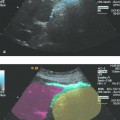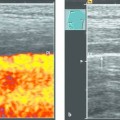Informed Consent
When a physician has determined that a certain procedure is indicated for the diagnosis or treatment of a disease, that procedure may be undertaken only with the informed consent of the patient.1 For this consent to be informed, the physician must explain the diagnostic or therapeutic procedure to the patient in a comprehensive, understandable, and timely manner prior to the proposed intervention. This disclosure must take place in an individual, face-to-face discussion between the physician and patient.
3.1 What Should Be Disclosed?
Before the patient can give written informed consent to proceed, he or she must be fully informed about the goal and necessity of the procedure, what the procedure will entail, potential risks and complications, and possible alternatives. The patient must be informed as to the nature, significance, and scope of the proposed test or treatment in its basic elements.
3.1.1 Indication
The proposed procedure is indicated if it is the best method available for investigating or treating the disease with an acceptable risk-to-benefit ratio. There may be no reasonable alternatives, or if such alternatives exist, they should be explained. Any therapeutic implications of the procedure should also be disclosed.1
3.1.2 Explaining the Procedure
The physician outlines the typical steps involved in the proposed test or treatment, with the aid if necessary of small drawings. If alternatives exist, they are also briefly explained. The patient must also be informed about any medications (sedatives, local anesthetics, analgesics) that will be administered. Necessary preliminary tests and follow-up care are also described.
3.1.3 Risks and Complications
The patient should be informed about risks and complications, regardless of the likelihood of their occurrence. Disclosing the risks of complications is an essential part of the informed consent process.
It should be noted that the more urgent a procedure is, the less stringent the requirements for informed consent. By the same token, the more dangerous or risky a procedure is, the greater the need to provide a detailed disclosure.2
Risks may be patient-related or procedure-related. Patient-related risks result from the history, laboratory data (e.g., coagulation), and available findings. The condition of the patient may also affect the risk. Procedure-related complications can be reduced by suitable preparation (see Chapter ▶ 9). They depend on the materials and instruments used and on the competence of the operator. Attention to guidelines, sound procedural technique, and follow-up measures after the intervention can reduce the incidence of complications.
The patient should be informed about typical risks of the procedure, regardless of the complication rate. Atypical risks may or may not be disclosed, depending on the complication rate. Rare risks should be disclosed only if they would adversely affect the patient’s quality of life.3
3.2 Means of Disclosure
There are no laws defining the exact way in which information about a procedure must be provided to the patient. But, in all cases, necessary information should be disclosed and discussed individually in a conversation between the doctor and patient.
3.2.1 Consent Form
In most countries, physicians are obligated to document informed consent. This means that, as a rule, physicians employ patient consent forms that can be ordered or downloaded online. In Germany for example:
www.perimed.de (click on Innere Medizin, Gastroenterologie).
www.diomed.de (click on Innere Medizin, Gastroenterologie).
www.thieme-compliance.com
3.2.2 Informed Consent Discussion
Consent forms provide the physician with a helpful guide in preparing to discuss the proposed test or treatment with the patient. They should never replace a verbal conversation between the physician and the patient (▶ Fig. 3.1
Stay updated, free articles. Join our Telegram channel

Full access? Get Clinical Tree








